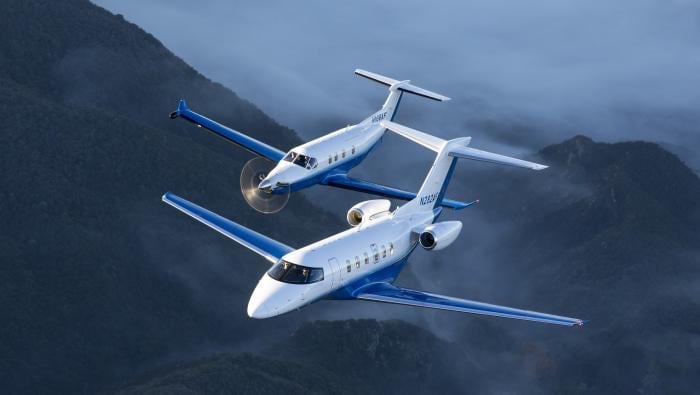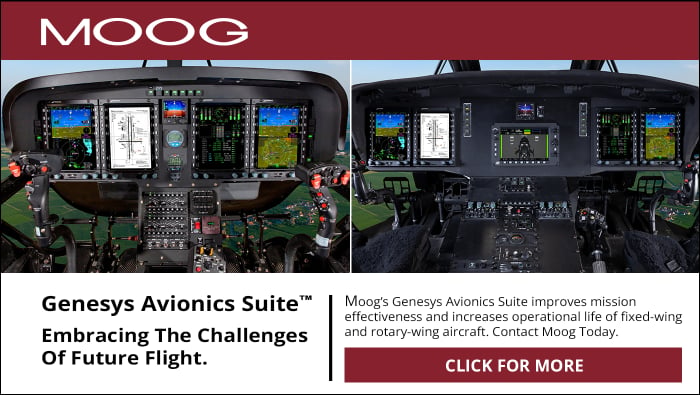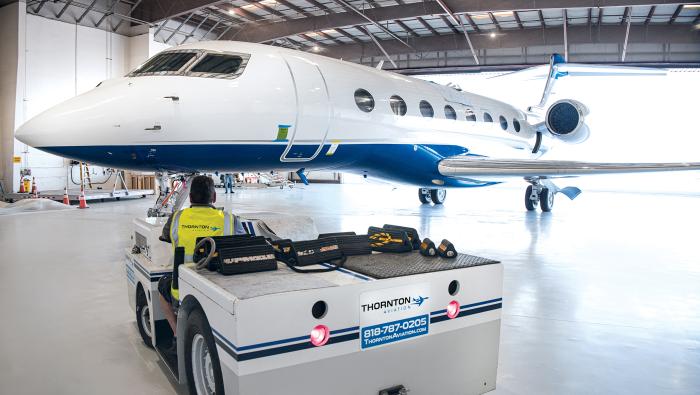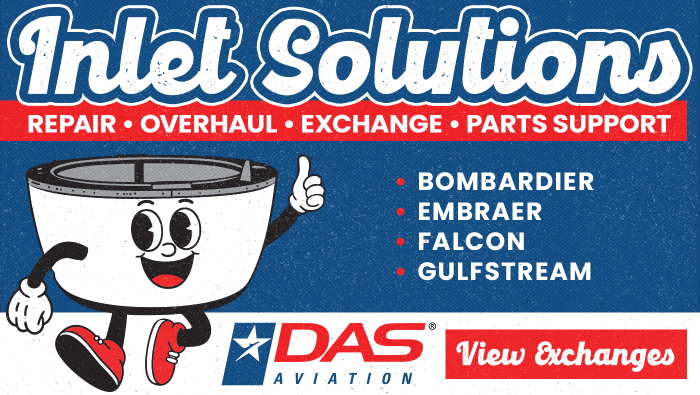|
Fractional aircraft provider PlaneSense is celebrating its 30th anniversary. The New Hampshire-based company is the largest operator of Pilatus Aircraft in the U.S., having accepted the 20th PC-12 built by the Swiss airframer in 1995. Since then, it has taken delivery of 93 of the turboprop singles, including the 2,000th PC-12 off the assembly line in 2023. It currently has 45 in operation. To offer its customers a larger cabin and increased range, PlaneSense launched its jet program a decade ago and took delivery of the very first PC-24 light jet in 2018. Today, its fleet includes 17 of the Swiss-built twinjets. The operator has continued to expand its services, including an exclusive partnership with Jetfly that allows its customers to use their flight hours on Jetfly’s Pilatus fleet in Europe and North Africa. It also recently unveiled the PlaneSense Sourcing Solution, expanding customer access beyond its fleet in the U.S. and the rest of the world, and the CobaltPass jet card, which complements the existing program with flexibility, highly competitive pricing, and no blackout dates across various aircraft types. Over the past 30 years, the company has tallied a 91% client retention rate, with some families now in their third generation of PlaneSense fractional ownership. |
|
|
With business aircraft OEM backlogs stabilizing at $55 billion and market optimism taking a sharp upturn in the third quarter, the latest JetNet IQ market forecast significantly scales up expectations over the next 10 years, projecting 9,700 aircraft valued at $335 billion will be delivered through 2034. This compares with a year ago, when the company forecast shipments of 8,644 business jets valued at $262 billion through 2033. Releasing its 10-year forecast and third-quarter survey results today at the 2025 JetNet IQ Summit in Washington, D.C, JetNet IQ creator Rolland Vincent said, “We're looking at $55 billion backlog, and that's a couple of years of work. Do we have a demand problem in our industry? No. We have a supply problem.” The business jet fleet is anticipated to grow at a compound annual growth rate (CAGR) of 2.15% over the next 10 years, reaching 30,400 by 2035. On the turboprop side, the forecast is more muted with an expected CAGR of 0.28% and deliveries of 4,100, 88.5% of which will be single-engine models, through 2034. Dollar volume over that time will reach $24 billion. For 2025, JetNet anticipates 825 new business jet deliveries, up 8% year over year, and 365 new turboprops, down 5%. As far as overall sentiment, net optimism jumped from -17.5% in the second quarter to +28.4% three months later, matching the highest level third-quarter 2022. |
|
|
Aircraft operators are having to urgently assess the risks posed by Russian drone incursions into Polish airspace over the past 24 hours. As Polish defense systems reacted to repel the drones, destroying several in the process, flights were abruptly halted at Warsaw Chopin (EPWA) and Modlin (EPMO) airports, as well as at Lublin (EPLB) and Rzeszów (EPRZ). The incident marked the first time Russian drones were shot down over NATO territory, with security analysts warning of escalated dangers posed to civil air traffic in a region destabilized by the ongoing conflict in Ukraine. Polish Prime Minister Donald Tusk confirmed that four of 19 Russian drones had been destroyed by Polish and NATO aircraft, and that the incursion has left the country at the closest point to open conflict since World War II. “Business aviation operators should treat recent incursions, like the Russian drone violations of Polish airspace, as a serious warning,” Dyami Security Intelligence CEO Erik Schouten told AIN. “Entering NATO airspace not only poses direct threats, but has already forced airport closures, disrupted access, and raised the specter of broader escalation. Flights can proceed, but awareness is key, and there might even be options to prepare for evacuation flights in case regular airlines stop flying or are disrupted.” |
|
|
While some progress has been made in avoiding U.S. tariffs on aviation products for many countries, more needs to be done in cases such as Brazil and Switzerland, which have found themselves singled out for high charges by the Trump Administration, business aviation leaders said yesterday at the JetNet IQ Summit in Washington, D.C. In fact, these executives called for the industry to keep up the pressure to achieve zero-rated tariffs on imports. “We’ve got to keep this a front-burner issue and not let up,” said NBAA president and CEO Ed Bolen. “We took care of a couple of things, and we’ll get around to others. It’s got to stay front and center, and that’s up to us to keep that pressure up.” Bolen participated in a panel discussing a range of critical advocacy issues with GAMA president and CEO James Viola and EBAA chairman Jürgen Wiese. IBAC general director Kurt Edwards moderated the panel. On tariffs, Bolen noted that the industry has been united on this issue but underscored the difficulty of discussing this with the White House. It has been difficult to pinpoint the leverage points to argue their cause, he said. |
|
|
Sponsor Content: Thornton Aviation Building trust, fostering teamwork and delivering exceptional outcomes. Thornton Aviation’s success is the result of more than technical expertise. |
|
|
NBAA is warning U.S.-based Part 145 repair stations holding EASA approval that they must soon have a safety management system (SMS) in place. Repair stations are required to update their EASA supplement by Oct. 10, 2025, and achieve full SMS integration by Dec. 31, 2025, according to NBAA. The association added, “Amanda Ferraro, CEO of Aviation Safety Solutions, explained the two deadlines, saying if a repair station does not have an SMS fully implemented by Octobr 10, it should update its EASA supplement by that date to include a statement of intent to implement an SMS by December 31. Then by December 31, the repair station must submit a declaration of compliance, indicating the SMS is in place. “Simply rebranding another company’s SMS manual or chapter is a mistake,” she said. “The FAA relies on the manual to conduct oversight, and the policies and procedures written in it. Operators will be held accountable to the FAA for what they document. “The declaration of compliance statement is a legal document submitted to the FAA, certifying that the operator’s FAA Part 5 SMS is fully in place. If repair stations have not started implementation, it’s critical that they begin now. It usually takes six to 12 months to implement,” she added. |
|
|
Customer-centric organizational structures and relationship-building strategies are vital, according to a discussion between aviation industry executives yesterday afternoon at the 2025 JetNet iQ Summit in Washington, D.C. The panelists also made a point to acknowledge the significant workforce challenges that continue to impact the sector. Featuring executives from Bombardier, GE Aerospace, Cirrus Aircraft, and Embraer Executive Jets, the discussion addressed key operational challenges including supply-chain disruptions, talent acquisition difficulties, and the evolving demands of business aviation customers in an increasingly complex marketplace. Paul Sislian, executive v-p of Bombardier aftermarket services and strategy, outlined his company’s approach to organizational structure. “We want a customer-centric organization,” he stated. “Do the right thing, always make sure the customer’s in the center of all the conversations. Keep repeating that culture. Take all the decision-making power and bring it as close as possible to the guys that are actually working directly with customers.” Todd Simmons, president of customer experience at Cirrus Aircraft, highlighted the company’s growth trajectory and infrastructure investments. “I was at Cirrus when there were less than 200 employees,” he explained. “Today, we’re approaching 3,000 [employees], delivering 15 to 16 airplanes a week, [and] two of those are jets,” Simmons said, noting the company’s strategic investments in facilities from Texas and Florida to Phoenix. |
|
|
Textron Aviation has expanded its ProAdvantage aircraft support program to include Cessna CitationJets and CJs with the addition of a newly enhanced fixed-cost parts plan. ProParts+ “simplifies maintenance planning by covering airframe systems and avionics parts required for line, scheduled, and unscheduled maintenance.” Based on reported flight hours, a predictable monthly payment plan helps operators manage expenses. While the company’s original ProParts option will still be offered, ProParts+ builds on it with the addition of landing gear coverage, including corrosion protection, and consumables such as fuel test kits and some corrosion-inhibiting compounds. It also includes standard freight costs for parts covered under the plan and an early buy-out option to terminate contracts in case of a change in aircraft ownership. “Expanding our ProAdvantage portfolio with ProParts+ reflects our continued investment in the long-term support of the Citation 525 Series,” said Brad White, the Wichita-based airframer’s senior v-p for global parts distribution, adding that the augmented program is a direct response to customer feedback. “We’ve designed this program to provide greater peace of mind and value by covering high-cost components and consumables that matter most to our operators.” |
|
|
EASA has approved Dassault’s Falcon 6X for enhanced flight vision system (EFVS) operations based on the manufacturer’s FalconEye head-up display (HUD) technology. The FalconEye combined vision system was developed to improve situational awareness for pilots making lower-altitude approaches in all weather conditions, day or night, making runway obstacles visible through fog and mist. The European air safety regulator added the amendment to the large-cabin jet’s type certificate on September 3, allowing operations down to 100 feet above the threshold on Cat 1 approaches using localizer performance with vertical guidance and barometric vertical navigation. Nonprecision continuous descent final approach techniques are also now permitted. Initially, the EFVS approval covers a single HUD configuration. In the near future, Dassault said it aims to achieve authorization for a dual HUD setup in which both pilots benefit from the same synthetic vision inputs based on a combination of terrain and infrastructure information from a database, and infrared and low-light camera imagery. Meanwhile, on September 5, Swiss private aviation group Albinati Aeronautics flew the first Falcon 6X into Cannes Mandelieu Airport (LFMD) in the south of France. The operator has worked with Dassault and local authorities to get approval for movements, taking into account the airport’s 5,282-foot runway, geography, and noise restrictions. |
|
|
Lufthansa Technik is expanding the availability of its Cyclean engine wash across Europe through a partnership with ACC Columbia Jet Service. As of August, ACC Columbia is providing on-site engine core wash services for aircraft as an authorized service partner at multiple European locations. Under the arrangement, Lufthansa Technik continues to manage commercial marketing and order processing, while ACC Columbia dispatches certified mobile teams across Europe to provide washing services for both narrowbody and widebody aircraft. Cyclean is now available at more than 60 locations worldwide. “This development will benefit [operators] in the region by providing easy access to efficient engine washes using our advanced system,” said Florian Prinz, head of engine life cycle services at Lufthansa Technik. ACC Columbia base maintenance manager Marlon Asthalter added, “This collaboration reflects our ongoing commitment to delivering innovative, sustainable solutions in aircraft maintenance, whether in business or commercial aviation.” The Cyclean system is designed to clean engines efficiently, improving performance while lowering fuel consumption. According to Lufthansa Technik, it reduces water usage by 50% compared to conventional methods, completes washes in under 45 minutes, and eliminates the need for post-wash engine run-ups. |
|
|
|
|
|
|
AINalerts News Tips/Feedback: News tips may be sent anonymously, but feedback must include name and contact info (we will withhold name on request). We reserve the right to edit correspondence for length, clarity, and grammar. Send feedback or news tips to AINalerts editor Chad Trautvetter. |
|
AINalerts is a publication of AIN Media Group, 214 Franklin Avenue, Midland Park, New Jersey. Copyright 2025. All rights reserved. Reproduction in whole or in part without permission is strictly prohibited. |

















